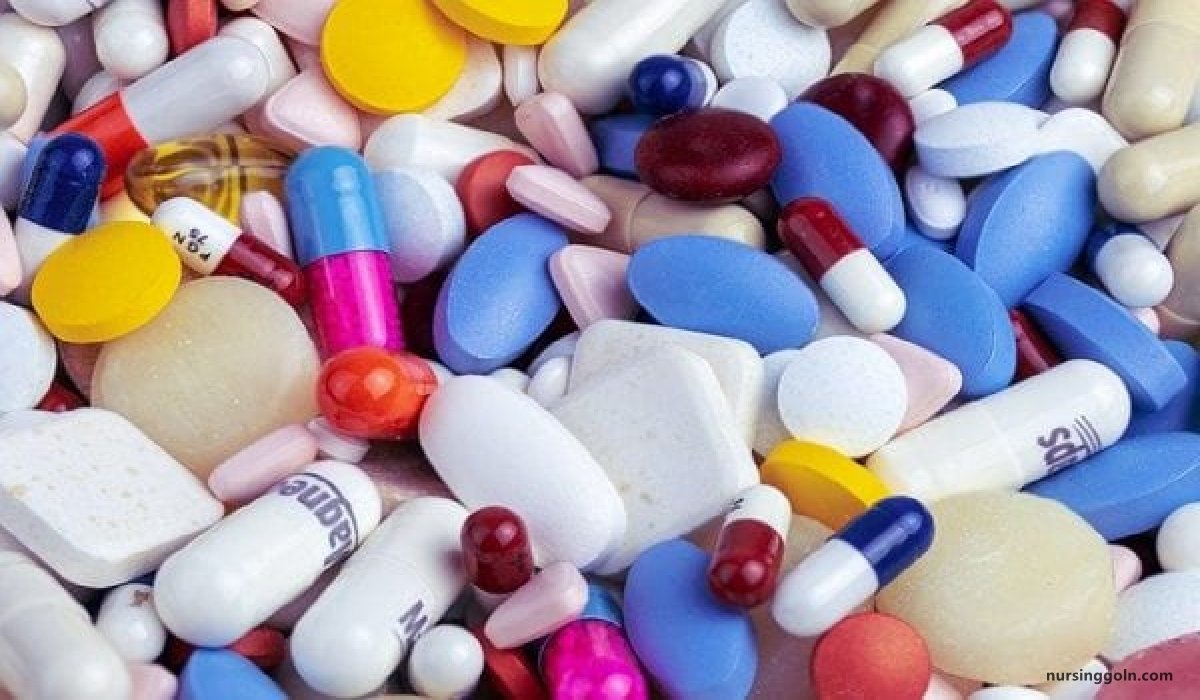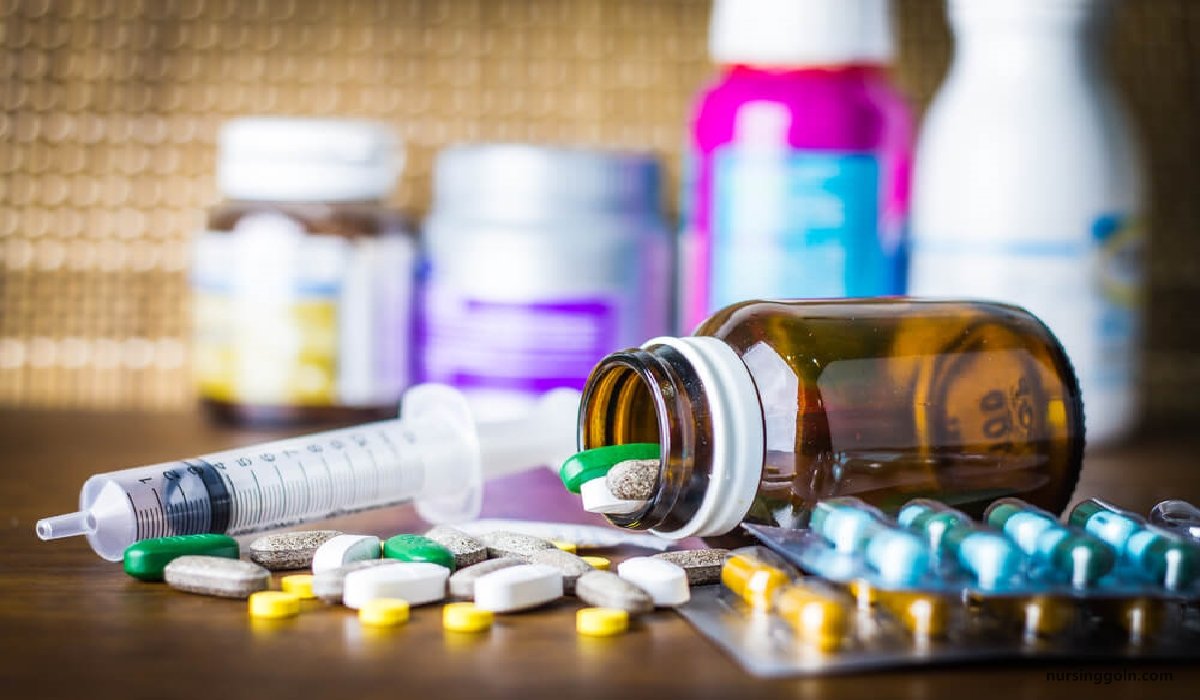Drug Dosage Formulation and Preparations – This book covers the entire syllabus of “Pharmacology” prescribed by BNMC- for a diploma in nursing science & midwifery students. We tried to accommodate the latest information and topics. This book is an examination set up according to the teachers’ lectures and examination questions.
At the end of the book, previous questions are given. We hope in touch with the book students’ knowledge will be upgraded and flourish. The unique way of presentation may make your reading of the book a pleasurable experience.

Drug Dosage Formulation and Preparations
The product designated for administration into the body is called the dosage form of the drug. A drug may be designed in either solid, semisolid, liquid, or gaseous form. Each form is suitable for a particular route of administration.
Available Dosage Forms:
| B. Semisolid preparation
|
| D. Gaseous preparation
|
Tablet
Definition of tablet:-Tablets are solid preparations each containing one or more active ingradients and obtained by compressing uniform volumes of particles.
◆ Composition:-
1. One or more active ingrediente
2. Auxiliary substances:-
a. Diluents:- (lactose, starch, sucrose, NaCl)
b. Binders (acacia, methylcellulose, starch, lactose)
e. Lubricants (magnesium stearate, stearic acid).
d. Disintegrating agents (bentonite, methylcellulose, gum)
e. Authorized coloring matter and flavoring agents
◆ Characteristics:
1. Tablets are usually solid
2. Shape:- circular cylinders, flat, round
3. They may bear a symbol
4. They may have lines or break marks on the surface
5. Tablets may be coated (eg, enteric coated tablet)
◆ Types:
1. Uncoated tablet,
2. Chewable tablet antacid, vitamin tablet
3. lozenges tablet
4. Effervescent tablets – dispirin
5. Sublingual tablets – nitroglycerine
6. Implant injectable contraceptives
7. Coated tablet – gastro resistant tablet
◆ Coatings of tablets
1. Sugar coating given –
- To prevent early damage.
- For making the tablet attractive
- Also to prevent bitter taste.
- Example: vitamin-B complex.
2. Film coating given –
- For making the tablet tasty.
- Example: Antacid, Metronidazole.
3. Enteric coating: (cellulose-acetate-phthalate) given
- To prevent their easy irritation to stomach. Proper release in alkali media in intestine.
Capsule:-
Capsule:-Capsules are solid preparations with hard and soft shells, each containing one active ingredient.
◆ Composition of capsules:
- Capsules shells
- Active ingredient
- Solvents, diluents, lubricants and disintegrating agent
- Antimicrobial preservatives
- Sweating, flavoring agent
◆ Types of capsules
- Hard capsules – antibiotics
- Soft capsules – vitamin A capsule
- Coated capsules – gastro resistant capsule
- Sustained release capsules – cap Fe plus
- Implant capsule – injectable contraceptive
◆ Importance of the capsule
- It does not irritate stomach
- When it comes in contact of secretion, it releases the content (drug).
- It easily dissolved and absorbed
- It also overcomes the problems of tablets.
Suppositories
Definition of suppositories: suppositories are solid preparations each containing one or mo more active ingredients and designated for rectal administration.
A. Composition of suppositories:-
- Active ingredient
- Suppository bases (non-irritant, non-toxic to mucous membrane)
- Diluents
- Absorbents
- Surfactants
- Lubricants
- Antimicrobial preservatives
B. Characteristics:-
- Suppository usually weight between 1 and 2 gram
- Suppositories are normally administered as a single dose for local action or systemic absorption of the active ingredients
C Example:-
- For local action – antihaemorrahiodal
- For systemic action – analgesic, antipyretic, sedative.
Powder
Powder is a dry grinned preparation containing one or more medicinal ingredients intended for oral or external use.
Types: two types
- Internal use: Antacid
- External use: Deistic powder

Semi-Solid Preparation
Ointment:
Ointment:-ointment is semisolid greasy preparations consist of a single phase basis in which solids or liquids may be dispersed.
Example:
- Antibiotic ointment (Chloramphenicol, Gentamicin)
- Antifungal ointment (Clotrimazole).
Cream
Creams are multiphase preparations consisting of a lipophilic phase and an aqueous phase designated for external use. Hydrophilic creams (aqueous cream) have the aqueous phase as the continuous phase, They contain oil-in-water emulsifying agents. Such as –
- Sodium or tri-ethanolamine soaps
- Polysorbates
Hydrophobic creams (oily cream) have the lipophilic phase as the continuous phase. They contain water-in-oil emulsifying agents. Such as-
- Wool fat
- Sorbitan esters
- Monoglycerides

Liquid preparation
Solution
Solution is a homogeneous liquid preparation containing one or more active ingredients dissolved in a suitable vehicle.
Suspension
Suspension is a heterogenous liquid preparation in which the solutes remain suspended below the solvent and is intended for oral administration. Such as: suspension of cotrimoxazole.
Emulsion
Emulsion is a heterogenous liquid preparation containing two immiscible liquids, (usually oil and water) are mixed by an emulsified agent and intended for oral administration. Such as
- Castor oil emulsion
- Cod liver oil emulsion.
(A mixture of two liquids not naturally soluble is called emulsion)
Oil-in-water (o/w) emulsion: oil phase is dispersed as globules throughout an aqueous
phase, example: oral emulsion.
Water-in-oil (w/o) emulsion: oil
Mixture
Mixture is a liquid preparation of one or more medicinal ingredient dissolved in solvents, commonly in water and is intended for oral administration. Such as: carminative mixture
Injection
Injections are sterile solutions, emulsions or suspension prepared by dissolving. emulsifying or suspending the active ingredient and any additives in water for injections or in a suitable non-aqueous liquid or in a mixture of the two.
Intravenous infusion
Intravenous infusions are sterile aqueous solutions or emulsions with water as the continuous phase. They are free form pyrogens and are usually made isotonic with blood. They do not contain an added anti-microbial preservative.
Other preparation Syrup
Syrups are concentrated aqueous solution of sucrose, other sugars or sweetening agents. Usually specific medicinal substances are added.
Lotion
Lotions are liquid or semi-liquid preparations containing one or more active ingredients in suitable vehicle. They are intended for application to the unbroken skin without friction.
Example: Benzyle-Benzoare lotion (BBL) 25%.
Read more:
